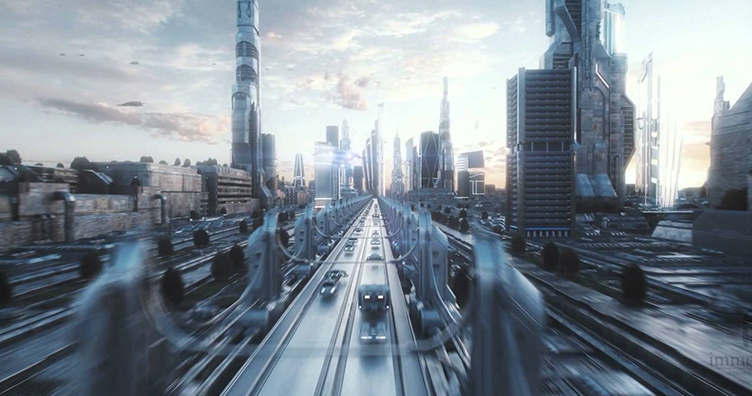In science fiction movies or set in a hypothetical future, one of the points that usually or used to show and that always attracted attention were the shopping streets. In a moment, the protagonist of the story ends up in a busy street, in which the cars are very different from those of now (yes, they are usually flying or something similar) and in which the stores are totally futuristic. It is a constant when futuristic forecasts are made: the products change and the process of relating to them also does so. Things appear practically alone, the dependents are robotic elements, the store is able to know everything about the consumer?

Many times it has already reached the exact moment that these futuristic films represented (and that is not exactly as it appeared in the story), but the truth is that these stories are saying much more than you might think about how the experience of the future should be. customer in these modern times. The cars may not fly and are not able to skip the traffic jams, but the truth is that things have changed. Retail has to adapt to modern times if it wants to continue connecting with consumers and if it wants to keep up with what consumers’ expectations take
What do consumers expect from the immediate future? How should the stores of the near future be? Although it may seem like a sci-fi movie cliché, stores must increasingly use technology and have to do so because the consumer has become an advanced user of it. If the buyer needs to access the information at all times, if he uses multiple connected devices and if he has experiences that include more and more elements and more and more scenarios, the brands have no choice but to play with it and have it very much in mind to create the experiences that fit your new needs.
The buyer of the present is already an omnichannel buyer, so he also needs an omnichannel customer service. That is to say, the consumer experience is no longer in compartments and the relationship with the brand is no longer carried out only one way or another. Now, consumers are everywhere and they use all the contact channels and all the tools at the same time and the brands have to be up to this challenge.
And this necessarily has a direct impact on the retail and on the sales strategy. After years of reducing everything to a comparative analysis between ecommerce and physical stores and establishing again and again that only one can emerge victorious from the battle, it is time to analyze what is actually happening in the market and see that consumers They want experiences every time in which the lines of separation are more and more diffuse between one channel and another and in which the marks are able to measure up.
The future of retail linked to ecommerce
Does retail have to reinvent itself? The analysts have it clear, as they are also clear that not only should they make a change. As they point out in an analysis at Phys, drawing conclusions from a study by researchers at Singapore Management University, ecommerce must also reinvent itself and be able to change its position. They have to be able to unite all digital with a constant flow of physical products they want to be able to compete actively. In front of them, the stores have to be able to merge their physical presence with a boom of techie elements.
And, in general, all of them have to be able to position themselves in front of the new challenges and to understand which are the new demands that they have to fulfill. After all, it is no longer about some going on one side and others on the other. The sellers of physical stores themselves have started selling online to compete with the push of electronic commerce. Everyone needs to be able to improve their inventory management, to have the best logistics services (the delivery of the product is a crucial moment of electronic commerce) or to be able to multiply their geographical presence in terms of storage to offer better results
This has several ramifications. As pointed out in the conclusions, more and more holistic approaches to sales will be taken into account. That is, instead of completely separating ecommerce and commerce from always, more and more firms will be using their physical stores to provide service and support to online sales. On the other hand, every time the online stores will have much more relation with the logistics part. That is, it will become more and more usual for me to sell it, I will give it. This will happen not only with the products themselves but also with those sold through the store, that is, the products of third parties (as Amazon does).
And in parallel are also emerging new elements that can work to simplify deliveries, such as creating new tools that allow deliveries remain in the hands of individuals to save costs (what is known as the uberization of ecommerce).

Technology enters the store
But the truth is that the changes experienced by the retail or that must live are not only linked to the relationship established with electronic commerce, but also are very marked by the technological advances that are emerging and the positive reaction of consumers to the same. Buyers want more and more information, more personalized services and more memorable experiences and stores have no choice but to resort to technology for it.
The future will therefore be full of intelligent testers, which will allow consumers to have more than simply the image of how they have the product, and screens that will give access to more information about the store and what it sells. Artificial intelligence will create much more complex and much more efficient assistants, while virtual reality will offer more immersive and memorable experiences.
The stores will be increasingly complex scenarios in which consumers will have more and more elements at their disposal.








